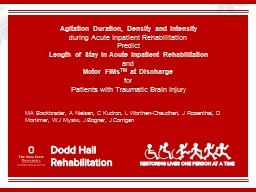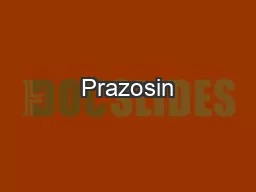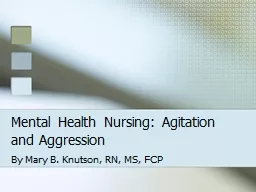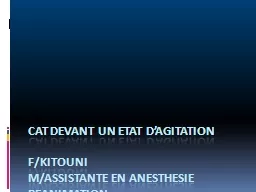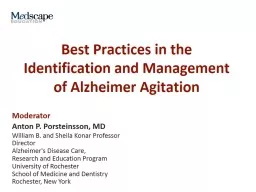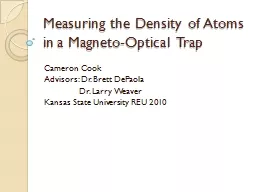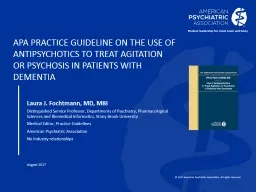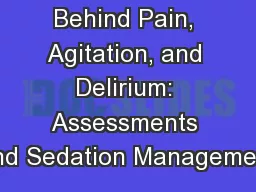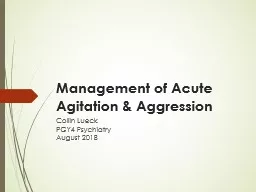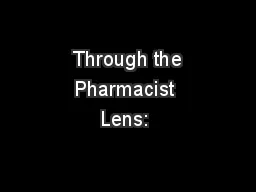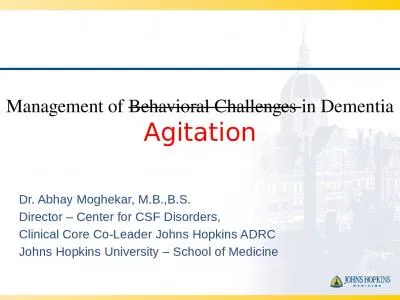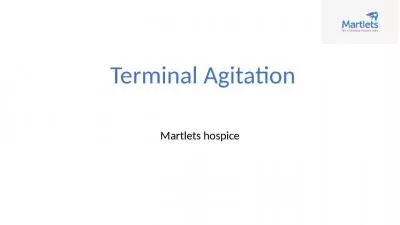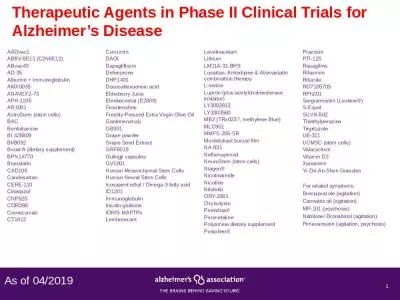PPT-Agitation Duration, Density and Intensity
Author : pamella-moone | Published Date : 2015-10-15
during Acute Inpatient Rehabilitation Predict Length of Stay in Acute Inpatient Rehabilitation and Motor FIMs TM at Discharge for Patients with Traumatic
Presentation Embed Code
Download Presentation
Download Presentation The PPT/PDF document "Agitation Duration, Density and Intensit..." is the property of its rightful owner. Permission is granted to download and print the materials on this website for personal, non-commercial use only, and to display it on your personal computer provided you do not modify the materials and that you retain all copyright notices contained in the materials. By downloading content from our website, you accept the terms of this agreement.
Agitation Duration, Density and Intensity: Transcript
Download Rules Of Document
"Agitation Duration, Density and Intensity"The content belongs to its owner. You may download and print it for personal use, without modification, and keep all copyright notices. By downloading, you agree to these terms.
Related Documents

